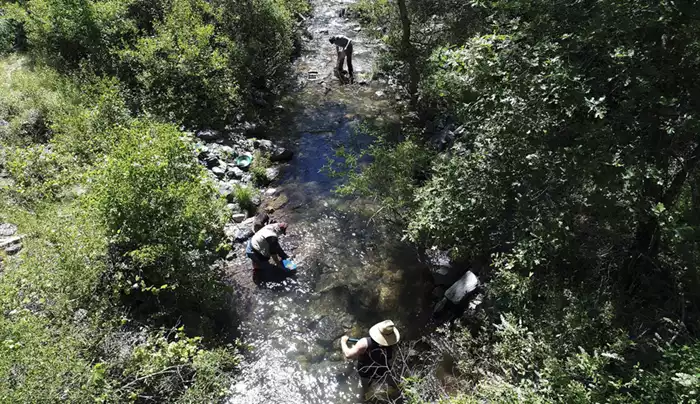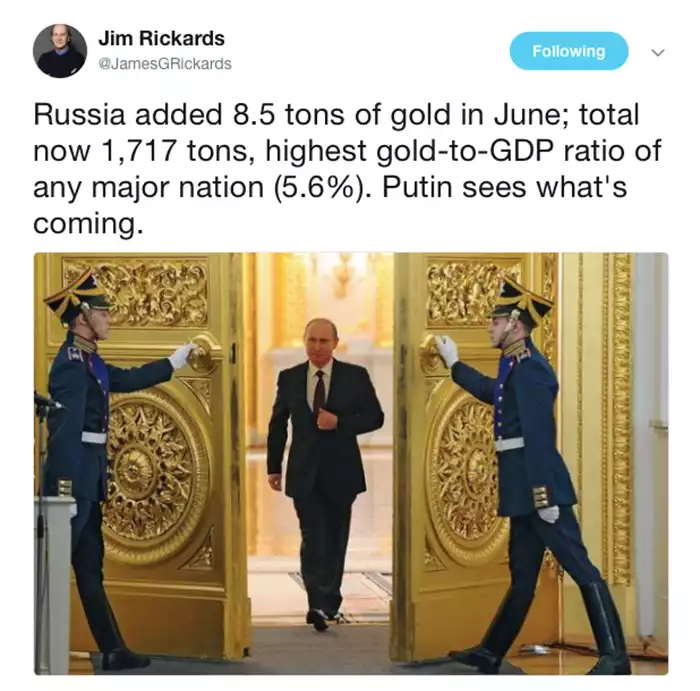Share Trading Versus Gold Panning: Where Effort Produces Value
News
|
Posted 31/07/2017
|
6044
Our Friday article on the balance of risks versus reward in today’s investment climate turned out to be a very timely one given the fact that the end of Friday’s equity trading session in Sydney saw a colossal fall of 82.2 points on the XJO index or a loss for the day of 1.4%. The move wiped out the prior three days of consecutive equity gains and took the index down by about 0.3% for the week.
In contrast, the USD gold price was last at $1,269.10, up another $9.10 from the time of our mail-out on Friday having briefly breached the $1,270 level.

CommSec’s Tom Piotrowski claimed that “there didn’t seem to be all that much that you could point the finger at” but did mention S&P500 futures, themselves influenced by “political developments in the US” when grasping at straws to assign blame. One can’t help but wonder about how much fundamentals are actually at play in a situation where the ongoing difficulties in repealing a health care act in a foreign country is attributed to daily market falls of this magnitude in our ASX200. After all, how does the continuance of ObamaCare cause A2 Milk to fall by 3% or Webjet to fall by 7%?
The answer may relate to the difficulty in determining value in today’s investment landscape and hence today we present news that helps to illustrate one of the foundations of value, effort.
As it turns out, the very day that our market dropped 1.4%, Thomas Curwen of the Los Angeles Times ran a story on modern day “gold fever” now gripping California following drought ending rain that has recently enabled long dry river beds to produce gold panning opportunities.
This year has seen the transformation of dry creek and river beds into areas of flowing water and with that, come the conditions required to deposit gold bearing overburden.

East of San Francisco near the Stanislaus National Forest is an example of such a gold producing region that was very profitable in the mid 19th century. In fact the broader Stanislaus River area as late as the 1970s saw a miner by the name of George Massie extract almost 800 ounces out of the ground; a win worth almost 1.3 Million Australian Dollars at the time of writing. As an aside, it seems unlikely that a similar acquisition of stock equity at the time would have resulted in an equivalent valuation now.
Californian gold deposits are a result of interactions between the Pacific & North American tectonic plates and, as pictured below, to this day are painstakingly retrieved by professionals, preppers and prospectors alike in what’s known as California’s “gold country”.

The LA Times article explains that in 2009 “a state judge issued an injunction that put a temporary moratorium on the use of motorized equipment near the state’s rivers and streams, putting an end to dredges that suction rocks, sand and pebbles from the bottom of a creek and pumps that circulate water into sluices located high on river banks.” The now running water has nullified the impact that the lack of machinery had on gold foraging and as such, a new resurgence in gold panning has begun.
Importantly, it’s not just the physical effort and the exposure to the elements that attributes value to gold that’s discovered in this manner, it’s the experience behind the effort. To be successful, gold panners require knowledge of geology and river dynamics. According to Tom this includes the ability to identify “rounded boulders tumbled together, orange soil tainted by rusted iron and veins of quartz hiding gold.”
The prospectors must “read streambeds, imagining how the current flowed during floods, hunting for any irregularity — a riffle, a ledge, a waterfall — that could create a backward eddy for the gold to escape the water’s momentum and drop to the floor.”
To attempt to quantify the gold that is potentially on offer, one participant described a moment when he discovered “a few gold specks, each no bigger than a fat flea” in his sludge bucket; the result of deploying many hours of effort.
Of course the effort and risk involved in commercial gold mining is simply a scaled up version of what we see happening in the Stanislaus region of California. When constantly discussing gold in terms of tonnes and at the level of governments however, perception of the effort behind those numbers can be lost
To exemplify, we will again conclude with a tweet from Jim Rickards made one week ago. It is staggering to imagine how many of the sludge buckets described above would be required to produce Russia’s 1,717 tons.
